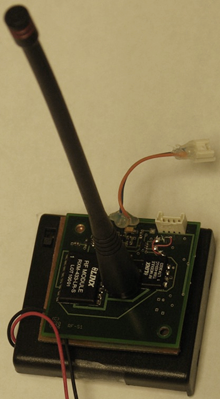
Prototype of wireless optical sensor node for measuring
water quality parameters |
Miniature and Low-cost Wireless Sensor Platform for
Environmental Monitoring
Investigators: Dan Kostov, Govind Rao, Upal Ghosh
Duration:
Funding agency: Strategic Environmental Research and Developmental Program (DoD)
Summary. The project “Miniature and low-cost wireless
sensor platform for environmental monitoring” began
on March 15, 2006 and ended on September 15, 2007. The main aim of
the SEED project was to provide proof-of-concept of a miniature wireless
sensor platform for water quality monitoring. This project successfully
developed a small (3”x3”x3”) and low-cost sensor
node that accommodates three optical sensing devices and transmits
the collected data through wireless communication to a base station.
The platform was equipped and tested with optical sensors for three
common water quality parameters: dissolved oxygen, pH, and turbidity.
The platform is amenable to future expansion to include additional
sensing elements that are under development at UMBC and elsewhere for
the detection of specific contaminants such as CO2, heavy metals, PAHs,
and toxic gases. The project team is actively seeking partners to advance
the technology to commercialization.
|